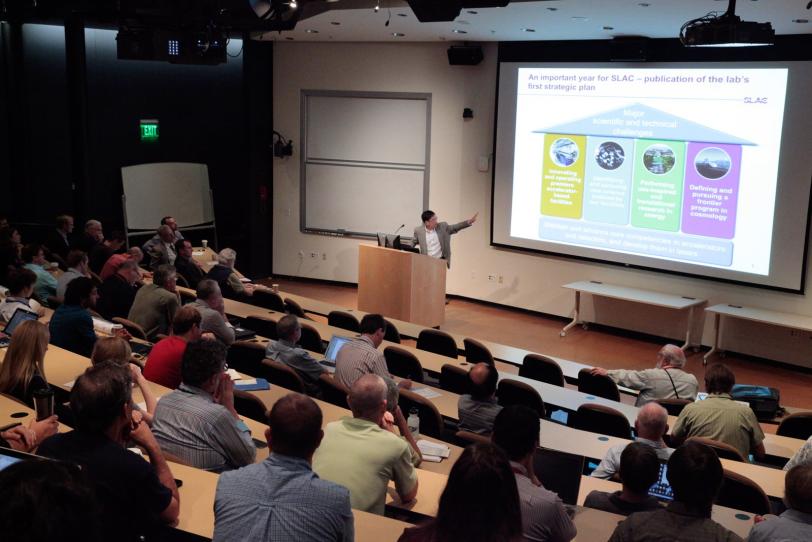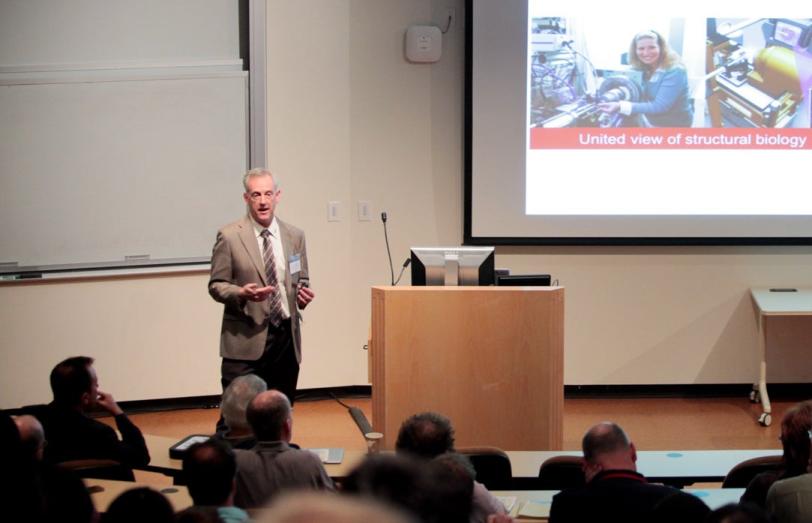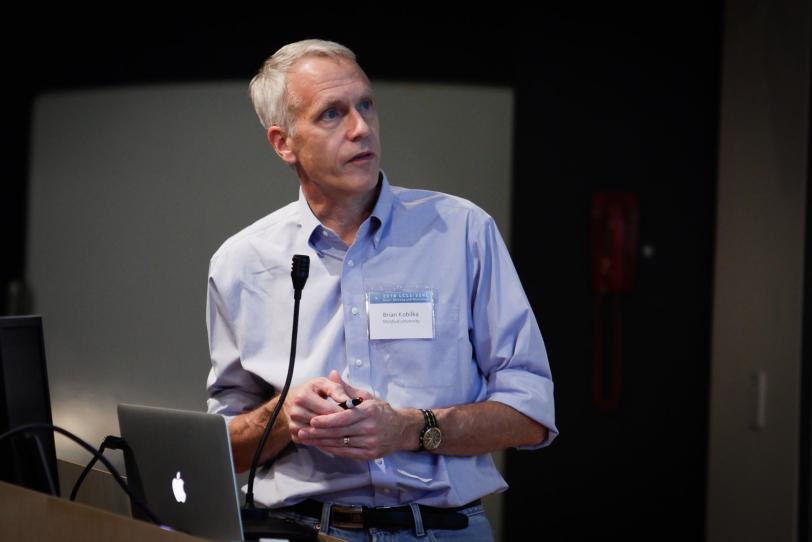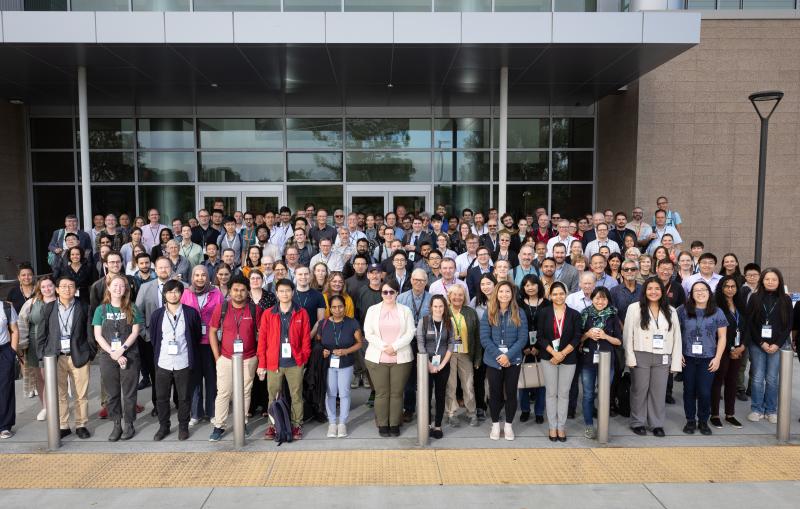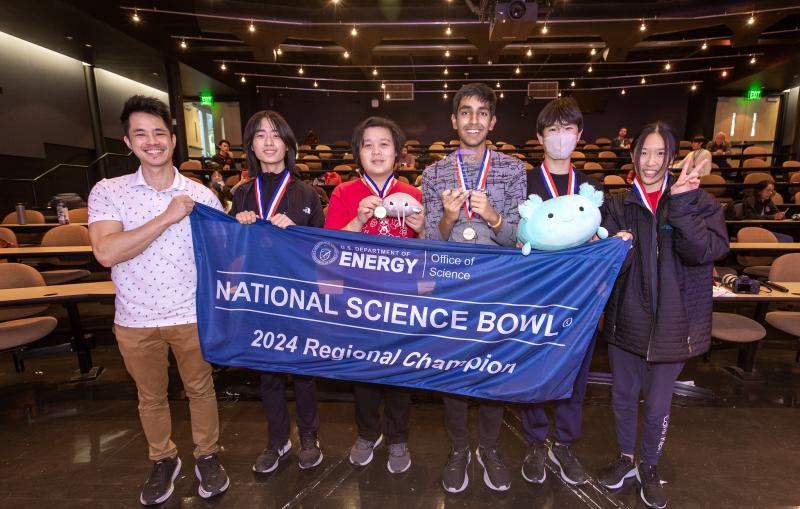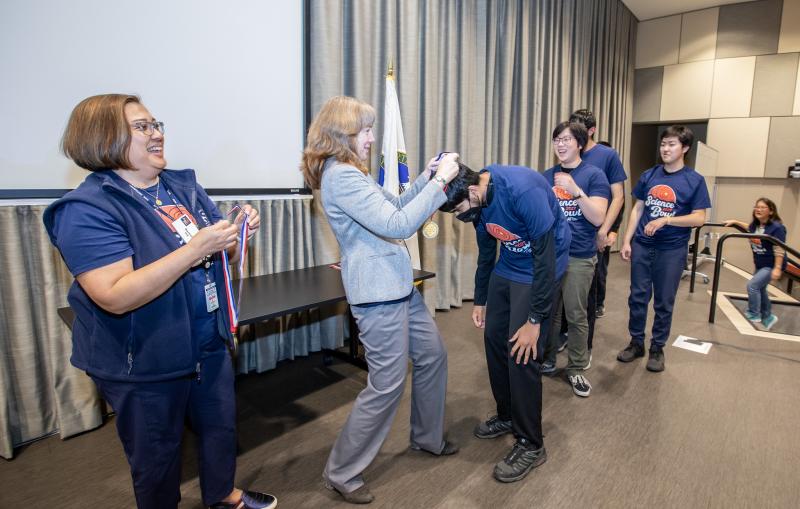New Directors, New Science Share Spotlight at Annual Meeting and Workshops
Nobel Prize-winning scientists and other prominent researchers, including new directors for SLAC's X-ray laser and synchrotron, gave talks during an Oct. 7-10 event.
Nobel Prize-winning scientists and other prominent researchers, including new directors for the X-ray free-electron laser and synchrotron light sources at the Department of Energy's SLAC National Accelerator Laboratory, led workshops and other scientific presentations at last week’s 2014 LCLS/SSRL Annual Users' Meeting and Workshops.
The event drew about 400 scientists and other attendees to 20 activities, including a dozen workshops focused on science, new capabilities and technology at the Linac Coherent Light Source (LCLS) and the Stanford Synchrotron Radiation Lightsource (SSRL).
As DOE Office of Science User Facilities, both of these light sources – which use very bright X-rays to explore the properties of matter at very small scales – are open to researchers from around the world.
"This is a very exciting time for both SSRL and LCLS, so this particular users' meeting was buzzing with renewed energy and vision," said SLAC’s Cathy Knotts, head of user research administration for LCLS and SSRL.
New Directors at LCLS and SSRL
Both facilities have new permanent directors who took the stage at last week's event:
- Mike Dunne, director for Laser Fusion Energy at Lawrence Livermore National Laboratory, will begin a new role as LCLS director Oct. 20.
- Kelly Gaffney, a SLAC Photon Science Department faculty member and a member of the Stanford PULSE Institute, became SSRL director in August.
SLAC Director Chi-Chang Kao said Gaffney and Dunne will work together to amplify synergies between SSRL and LCLS.
Meeting Highlights
Workshop topics ranged from technical developments in X-ray detectors and data analysis to efforts to capture X-ray images of single particles such as viruses.
Among the highlights:
- One workshop featured sessions on the history and latest advances in X-ray crystallography, a century-old technique in which the molecular structure of crystallized samples is determined by analyzing patterns formed by X-ray light.
- Speakers discussed real-time X-ray studies of active processes in polymers, solar-panel materials and other thin films during an "In-situ/Operando Characterization of Soft Materials" workshop.
- Another workshop detailed the use of a chemical analysis technique called X-ray spectroscopy to study environmental contaminants and investigate nuclear materials.
- Three scientific awards were presented during the conference: Bart Johnson received the Farrel W. Lytle Award, Chris Pollock received the Melvin P. Klein Scientific Development Award and Ying Dao received the William E. and Diane M. Spicer Young Investigator Award.
Big Data and Simulation
Filipe Maia of Uppsala University in Sweden discussed the challenge of handling the "data deluge" generated by experiments at facilities such as LCLS, barriers to accessing experimental data and the Coherent X-ray Imaging Data Bank he created to facilitate sharing of this data.
Michael Levitt, professor of structural biology at the Stanford University School of Medicine and a winner of the 2013 Nobel Prize in Chemistry, discussed advances in computer modeling of large molecules. Levitt noted that it took about two hours of computing time to produce each frame in one of the earliest computer animations of molecular motion. He expects computing power, which has become thousands of times cheaper, faster and smaller in the past four decades, to continue to make big leaps that benefit science, with next-generation devices cramming dozens of processors into the space of a modern tablet device. "This is going to come – I think we'll be able to harness it," he said.
Next Steps in Membrane Protein Research
Brian Kobilka, professor and chair of molecular and cellular physiology at Stanford's School of Medicine and a winner of the 2012 Nobel Prize in Chemistry, discussed the state of research on G protein-coupled receptors, which are popular drug targets that reside in cells' plasma membrane.
Kobilka, who has conducted research at SSRL and LCLS, described recent studies that reveal the active and inactive structures of these proteins after they have been extracted from cells. He said an important next step is to find a way to study the receptors in their native environment in a living cell membrane. "To look at the receptors in a native (membrane) ... and monitor structural changes in real time – that's where we have to go to really understand how they work," he said.
Contact
For questions or comments, contact the SLAC Office of Communications at communications@slac.stanford.edu.
SLAC is a multi-program laboratory exploring frontier questions in photon science, astrophysics, particle physics and accelerator research. Located in Menlo Park, Calif., SLAC is operated by Stanford University for the U.S. Department of Energy's Office of Science.
SLAC National Accelerator Laboratory is supported by the Office of Science of the U.S. Department of Energy. The Office of Science is the single largest supporter of basic research in the physical sciences in the United States, and is working to address some of the most pressing challenges of our time. For more information, please visit science.energy.gov.
